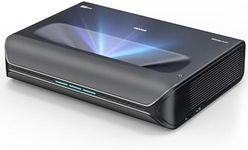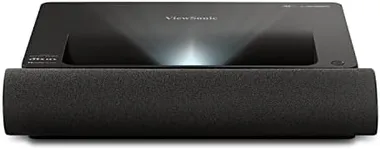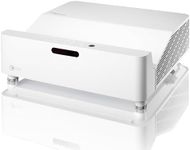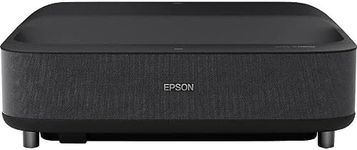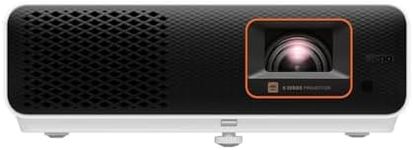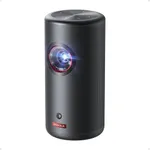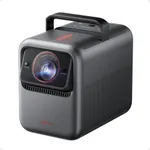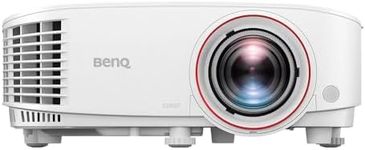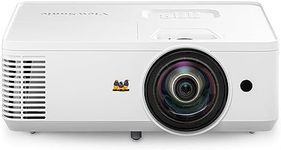Buying Guide for the Best Short Throw Projectors
Choosing a short-throw projector can be a great way to enjoy big-screen entertainment or presentations in smaller spaces. The main advantage of short-throw projectors is that they can create large images from a short distance, making them ideal for rooms where you can't place the projector far from the screen or wall. To find the best fit for your needs, it's important to understand the key specifications and how they relate to your intended use, such as home theater, gaming, business presentations, or classroom use.Throw RatioThe throw ratio tells you how wide the image will be at a certain distance from the screen. For short-throw projectors, this ratio is usually less than 1:1, meaning you can get a large image even if the projector is close to the wall. A lower throw ratio (like 0.4:1) means the projector can be placed very close, while a higher short-throw ratio (like 0.8:1) needs a bit more distance. If you have limited space, look for a lower throw ratio. Measure your room and decide how big you want your image to be, then check if the projector's throw ratio matches your setup.
Brightness (Lumens)Brightness, measured in lumens, tells you how much light the projector can put out. This is important because it affects how clear and visible your image will be, especially in rooms with some light. Lower brightness (under 2000 lumens) is fine for dark rooms, while higher brightness (over 3000 lumens) is better for rooms with windows or lights on. Think about where you'll use the projector most—if you can't always control the lighting, go for a brighter model.
ResolutionResolution is the number of pixels the projector can display, which affects how sharp and detailed the image looks. Common resolutions are HD (1280x720), Full HD (1920x1080), and 4K (3840x2160). Higher resolution is better for watching movies, gaming, or showing detailed presentations, but if you're mostly showing simple slides or cartoons, lower resolution may be enough. Match the resolution to what you'll be watching or presenting most often.
Contrast RatioContrast ratio measures the difference between the darkest black and the brightest white the projector can show. A higher contrast ratio means deeper blacks and more vibrant colors, which is especially important for movies and games. If you want a more cinematic experience or plan to use the projector in a dark room, look for a higher contrast ratio. For basic presentations, contrast is less critical.
Input OptionsInput options refer to the types of connections the projector offers, like HDMI, USB, VGA, or wireless. This is important because you need to connect your devices, such as laptops, streaming sticks, or game consoles. Make sure the projector has the right ports for your equipment. If you want to connect wirelessly, look for models with Wi-Fi or Bluetooth support.
Keystone Correction and Lens ShiftKeystone correction and lens shift help you adjust the image if the projector isn't perfectly lined up with the screen. Keystone correction lets you fix a distorted image (like a trapezoid shape), while lens shift lets you move the image up, down, or sideways without moving the projector. If you can't place the projector exactly in front of the screen, these features make setup much easier. Consider how flexible your setup needs to be and choose accordingly.
Built-in AudioSome projectors have built-in speakers, which can be handy if you don't want to set up separate audio equipment. However, built-in speakers are usually basic and may not be loud or clear enough for larger rooms or movie nights. If sound quality is important to you, check the speaker specs or plan to use external speakers.
